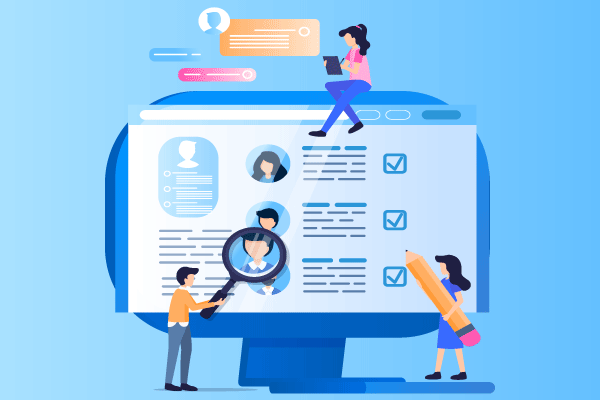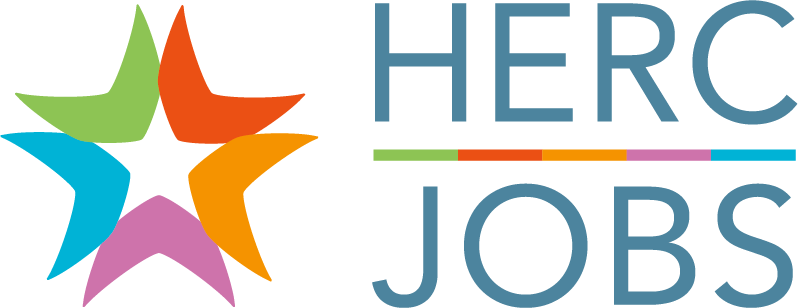Post-Webinar Q&A: LinkedIn Rock Your Profile

We weren’t able to address every question submitted by LinkedIn Rock Your Profile attendees during the live webinar, but presenter Bryant Ramirez tackles most of them below!
[Watch the webinar recording and access the presenter’s deck.]
Setting Up a LinkedIn Profile
Q: Is there a way to post an article or published item, so it remains as the first item posted?
A: You can add the article/published item to your “featured” section below the About section and make this the first item.
Q: Does LinkedIn provide tools or templates to help improve your headline, summary, or work experience sections?
A: Check out https://blog.linkedin.com/ for tips and tools.
Q: Every time I try to add volunteer experience, it blocks me. What am I doing wrong?
A: This seems to be an error. Go to help.linkedin.com for more help.
Q: What did Bryant use to separate his ‘bullets’ in his headline? Without them, a lot of text is overwhelming!
A: It’s a special character. In Word, you’ll find it as an Advanced Symbol, as Symbol character 183, Unicode F0B7. You could also just copy/paste it from my profile into yours.
Q: Do you suggest bullet points over sentences? Is a narrative better aided by full sentences?
A: I recommend a combination of both depending on what you’re trying to communicate. Is it a story, or are these distinct accomplishments? You could use prose to introduce a role you have done, but use bullets to highlight specific accomplishments.
Q: Bullets vs. narrative – wouldn’t this also reflect one’s communication style?
A: True. At the end of the day, it’s all about the story you are trying to convey. Likely, prose will have a higher likelihood of capturing someone’s ‘emotional’ attention (e.g., the Apollo Theater example I gave) while the bullets are quick ways of explaining ‘wins’ and ‘accomplishments.’
Q: Can you suggest how to address a 5-year career gap that included relevant/strategic volunteer work?
A: Add this experience as work experience. You can say this is “independent” experience. You can also call out a “sabbatical,” which I’ve seen done before. All of this is about the story you tell. What did you contribute during that 5-year gap? What did you learn?
Q: If we are in one industry but looking to move to another industry, which industry should we list? The current one or the one(s) we think we want to move to?
A: Choose the new one so that it’s searchable. I also recommend showing the “experience” that demonstrates meaningful interest in that new industry, such as education, internships, fellowships, and other projects/initiatives.
Q: What should one highlight if you are an entrepreneur consultant but want to remain open to a great job opportunity? Highlight self or entrepreneur success or hybrid?
A: You can say you’re working on a freelance/part time opportunity. I think employers understand that you could be leveraging your experience for various types of roles. I think your ‘entrepreneur success’ is part of ‘you,’ so tell that story. How does it allow you to add more value?
Q: How do you use LinkedIn to signal your readiness for jobs that don’t have a single title? I.e., higher education program administration jobs that might live in a couple of different areas of the university.
A: Good question. I think this is part of crafting your story by starting with what matters in any of those roles (e.g., leading the next generation of academics, passion for education, etc.) and then highlighting skills and experiences that are relevant for such roles. Many times, while you may not have the specific role or it may not be in the title, your profile should connect the dots and make it apparent how your experience is relevant for these roles you’re applying for. In my experience screening candidates, I look at their holistic background, and there are times I select a “non-traditional” candidate (e.g., a non-profit leader) because I can see how their skills/experience is relevant for the job I am filling (e.g., stakeholder management, current state & future state assessments, problem-solving, data & analytics). I believe everyone could mold their profile to demonstrate these relevant skills and experiences that provide a holistic perspective of your capabilities.
Q: If your LinkedIn profile is different from your resume because you’re tailoring them differently, do employers ever view this suspiciously, as though you’re inconsistent or somehow lying or hiding something about yourself?
A: It’s all about framing. You should be tailoring your resume anyways per role, as each role may require a different framing of your existing experience. Think of the LI profile as simply another way to frame what already exists.
Q: Should jargon be used in profile to demonstrate knowledge or not included to appeal to a broader audience?
A: It depends where in the profile. I would avoid using jargon in the tagline and the first portion of an About, but jargon can make sense in the experience section.
Q: Can you explain how LinkedIn searches profiles (i.e., how recruiters find people with skills or experiences, etc.)? How do you know if your profile is competitive for your field?
A: There isn’t a specific “score” that determines how competitive you are for a specific field; however, recruiters can use the attributes we discussed to search for you in Recruiter. I’m not as familiar with the specific algorithms, but needless to say, the more you contribute and the stronger your profile becomes, the more likely you show up in relevant searches.
Q: In academia, recommendations are almost always confidential. How valuable are non-confidential recommendations?
A: This is an important nuance to consider. I’ll leave this to your discretion. Again, it’s about framing. A LinkedIn recommendation is likely much more brief and is more about their relationship and high-level observations – sort of like a “Kudos” or even a “Thank you note” to you that’s public. I can’t tell you exactly where the “line” is, but I think there is a clear distinction between a comprehensive, confidential, Academic recommendation and a brief, non-confidential, LinkedIn profile recommendation.
Other Ways to Use LinkedIn
Q: Why follow influencers? How is that going to help me, other than seeing the lifestyles of the rich and famous?
A: There are influencers of all types, not just the ones you see showing fancy stuff. Off the top of my head, I’m thinking someone like Ray Dalio is a valuable influencer. While he’s very wealthy, almost all of the content he posts is about explaining the current economic conditions in layman’s terms and providing a perspective you may not hear elsewhere. He also has shared some personal struggles that any human could relate to. The relevant “Influencers” could provide you with perspectives that may be helpful in future discussions and other networking opportunities as well.
Q: LinkedIn seems to be increasing with social media types of posts, rather than professional media. How should we adapt to this change in how LinkedIn is used now compared to previously?
A: LinkedIn is simply a means, and it’s up to members to decide how they wish to communicate. The culture we promote on the platform still makes the content lean professional, but as we know, we’re not just a “professional” – we’re a whole human being. So I encourage you to share your perspectives as a whole human that could be relevant to the work you do and how you do it. This opens up a lot more commentary beyond specific industry insights. There’s a clear line between something that’s totally personal (such as your birthday party) and something that’s very relevant to your professional life but is related to something personal (such as celebrating a family moment as part of work-life harmony). Again, it’s all about framing.
About Our Presenter: Bryant Ramirez is an Associate on the Global Customer Experience team at LinkedIn and a LinkedIn ‘Rock Your Profile’ Ambassador. On the Global Customer Experience team, Bryant leads efforts in building customer intelligence capabilities and designing new service models to deliver more value to LinkedIn’s customers. As a ‘Rock Your Profile’ Ambassador, he works with diverse and underrepresented audiences to better leverage the power of LinkedIn’s platform and network. He is an alum of UCLA and the University of Texas at Austin, and in his spare time, he enjoys rock climbing, playing guitar, and traveling, having been to over 60 countries and 6 continents.
